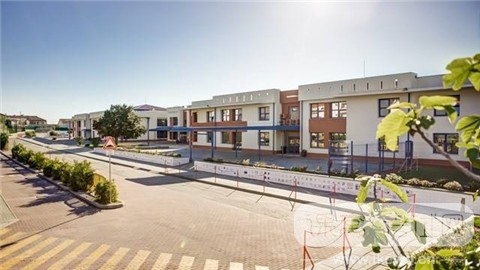光合作用是A-level生物考试中的一项最基础知识,同学们在学习A-level生物时一定要打好基础,小编整理了光合作用的相关资讯,一起去看看吧。
Photosynthesis revision光合作用要点概述
Part 1 Pigments and the Absorption of Light色素与光吸收
At GCSE, you will have used the the following equation:
This shows that carbon dioxide and water are turned into glucose and oxygen in a plant, using light as energy. The glucose made may be used to make other substances or it may be used in respiration. The oxygen may diffuse out through the stomata or it may be used in respiration.
CO2吸收位置: The carbon dioxide enters the plant by stomata (in the leaves) or lenticels (in the stem). The water enters through the roots and moves up through the plant in xylem vessels.
Light is required as an energy source for the reaction and chlorophyll is necessary to absorb the light.
Light energy is necessary but it must be harvested and trapped by the photosynthetic pigments to be of any use.
叶绿素分类

Chlorophyll absorbs light from the visible part of the electromagnetic part of the spectrum, but there are several types of chlorophyll:
• chlorophyll a
• chlorophyll b
• chlorophyll c
• bacteriochlorophyll (found in photosynthetic bacteria!)
There are also other families of pigments, such as the carotenoids.
不同色素的吸光强度都不一样. 不同部位的色素吸光强度也不一样. Not all wavelengths of light are equally absorbed and different chlorophylls absorb more strongly in different parts of the visible spectrum.
Absorption and Action Spectrums
The action spectrum shows the rate of photosynthesis at different wavelengths.
The absorption spectrum shows how strongly the pigments absorb at different wavelengths.
The absorption spectrum and action spectrum show that the wavelengths that are most strongly absorbed (red and blue) are the ones that cause photosynthesis to proceed at the fastest rate. Green is not strongly absorbed; rather it is reflected, causing leaves to look green.
The shorter the wavelength, the more energy it contains. During photosynthesis the light energy is converted into chemical energy. The absorbed light excites electrons in the pigment molecules and the energy can be passed on to be used by the plant.
Photosystems
The pigments are arranged in funnel shaped photosystems that sit on the thylakoid membranes in the chloroplasts.
In each photosystem, several hundred pigment molecules, called accessory pigments, are clustered around a particular pigment molecule, known as the primary pigment.
The various accessory pigments absorb light of different wavelengths and pass the energy down the photosystem. Eventually the energy reaches the primary pigment that acts as a reaction centre.
There are 2 types of photosystem:
• Photosystem One - PS I:
• Its primary pigment is a molecule of chlorophyll a with an absorption peak at 700nm. It is called P700
• Photosystem Two - PS II:
• Its primary pigment is a molecule of chlorophyll b with an absorption peak at 680nm. It is called P680
PS I are situated next to PS II on the thylakoid membrane.
以上就是专家分享的新加坡A水准考试。祝福各位学生可以发挥自己的优点,改善自己的弱点,不断提高A Level物理学习!


凭借优质出色的教育资源、全球广泛认可的学历资格、便利的签证政策,英国教育已深入广大中国学生和家长心中,英国也成为众多留学生和家长的首选留学国家之一。小编整理了如何留学英国的相关资讯,一起去看看吧。
 A-LEVEL在线试听课程
A-LEVEL在线试听课程






